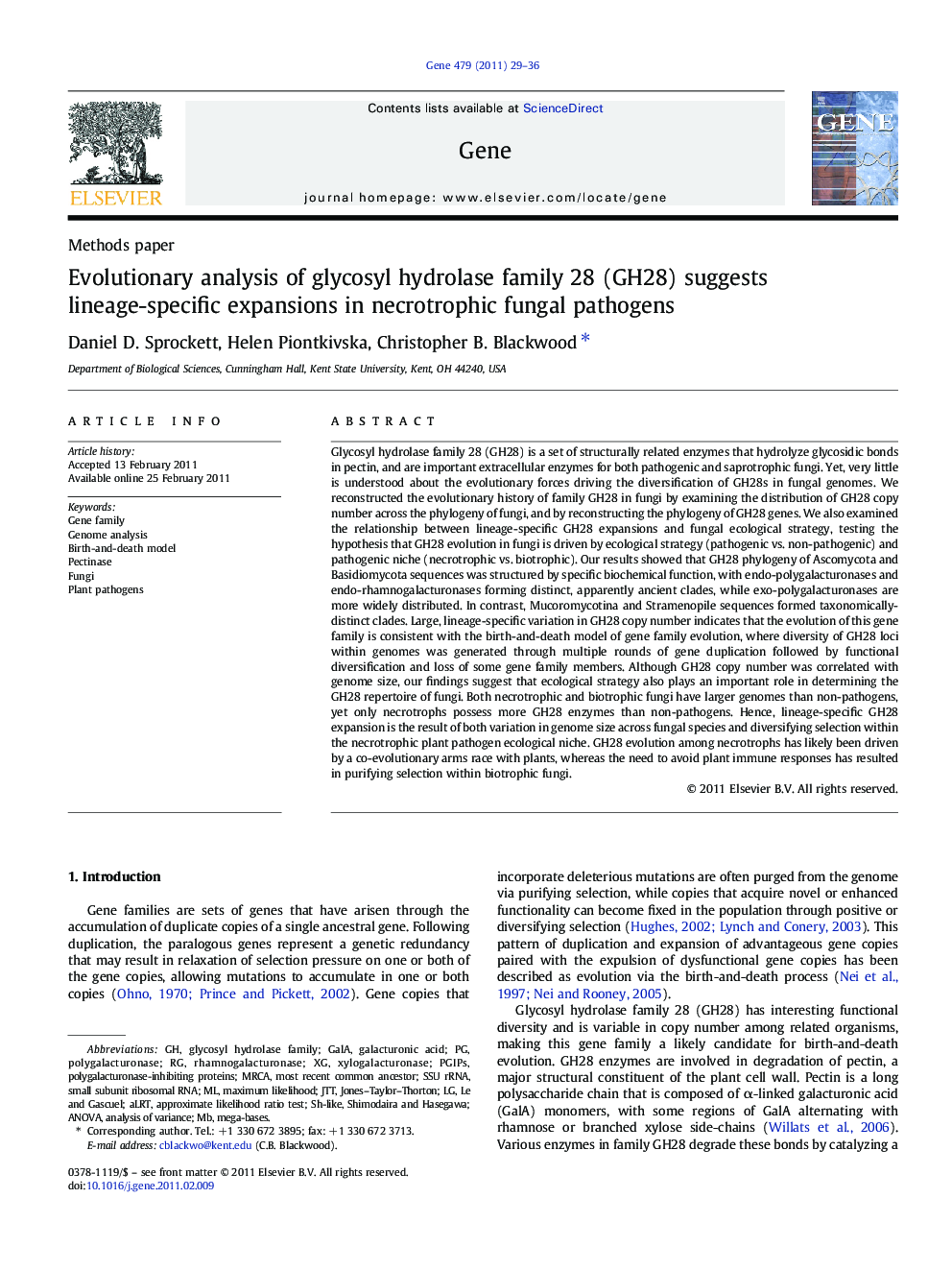| Article ID | Journal | Published Year | Pages | File Type |
|---|---|---|---|---|
| 2818406 | Gene | 2011 | 8 Pages |
Glycosyl hydrolase family 28 (GH28) is a set of structurally related enzymes that hydrolyze glycosidic bonds in pectin, and are important extracellular enzymes for both pathogenic and saprotrophic fungi. Yet, very little is understood about the evolutionary forces driving the diversification of GH28s in fungal genomes. We reconstructed the evolutionary history of family GH28 in fungi by examining the distribution of GH28 copy number across the phylogeny of fungi, and by reconstructing the phylogeny of GH28 genes. We also examined the relationship between lineage-specific GH28 expansions and fungal ecological strategy, testing the hypothesis that GH28 evolution in fungi is driven by ecological strategy (pathogenic vs. non-pathogenic) and pathogenic niche (necrotrophic vs. biotrophic). Our results showed that GH28 phylogeny of Ascomycota and Basidiomycota sequences was structured by specific biochemical function, with endo-polygalacturonases and endo-rhamnogalacturonases forming distinct, apparently ancient clades, while exo-polygalacturonases are more widely distributed. In contrast, Mucoromycotina and Stramenopile sequences formed taxonomically-distinct clades. Large, lineage-specific variation in GH28 copy number indicates that the evolution of this gene family is consistent with the birth-and-death model of gene family evolution, where diversity of GH28 loci within genomes was generated through multiple rounds of gene duplication followed by functional diversification and loss of some gene family members. Although GH28 copy number was correlated with genome size, our findings suggest that ecological strategy also plays an important role in determining the GH28 repertoire of fungi. Both necrotrophic and biotrophic fungi have larger genomes than non-pathogens, yet only necrotrophs possess more GH28 enzymes than non-pathogens. Hence, lineage-specific GH28 expansion is the result of both variation in genome size across fungal species and diversifying selection within the necrotrophic plant pathogen ecological niche. GH28 evolution among necrotrophs has likely been driven by a co-evolutionary arms race with plants, whereas the need to avoid plant immune responses has resulted in purifying selection within biotrophic fungi.
